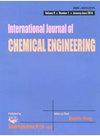利用生命周期评估法对基于污水污泥厌氧消化的污水处理进行影响评估
IF 2.4
4区 工程技术
Q3 ENGINEERING, CHEMICAL
引用次数: 0
摘要
一个技术系统的所有输入和输出都可以从环境角度来解释。利用生命周期评估(LCA)方法,可以将一些对环境危害较小的变化纳入系统中。本研究旨在评估德黑兰南部污水处理厂(WWTP)对环境的影响,并采用了生命周期评估方法。根据德黑兰省给排水公司测量获得的定性参数数据,使用 SimaPro 软件(9.0.0)和 ReCiPe 2016 中点法定义的标准计算和分析了环境排放量。在 ReCiPe 2016 方法中,结果以两个中间级(包括三个影响等级)和最终级(包括 18 个影响等级)表示。结果显示,经处理的废水和氯因子对环境的不利影响最大。在 18 个影响等级中,海洋环境毒性等级中的处理废水(1,4-DCB 量为 101.1531 千克)对环境的影响最大。废水处理(WWT)过程中燃烧沼气的热电联产(CHP)装置所消耗的电能降低了大部分影响等级的环境影响。污水处理工艺对环境的最不利影响与对人类健康和生态系统的破坏有关。根据研究结果,建议使用热电联产系统来节约能源,同时减少对环境的有害影响。本文章由计算机程序翻译,如有差异,请以英文原文为准。
Impact Evaluation of Wastewater Treatment Based on the Anaerobic Digestion of Sewage Sludge Using the Life Cycle Assessment Method
All the inputs and outputs of a technical system can be interpreted from an environmental point of view. Using the life cycle assessment (LCA) approach, some changes that are less harmful to the environment can be included in the system. This research aims to evaluate the environmental effects of the wastewater treatment plant (WWTP) in South Tehran, and the LCA method was used in this study. Based on the data of qualitative parameters obtained from the measurement of Tehran province’s water and sewage company, the environmental emissions were calculated and analyzed using SimaPro software (9.0.0) and the standards defined under the ReCiPe 2016-midpoint method. In the ReCiPe 2016 method, the results were expressed in two intermediate levels (including three classes of influence) and final (including 18). The results showed that the treated wastewater and chlorine factors had the most adverse environmental effects. Among the 18 effect classes, the treated wastewater in the class of marine environmental toxicity with the amount of 101.1531 kg 1,4-DCB had the most environmental impacts among other classes. The power consumed by the biogas-burning combined heat and power (CHP) unit in the wastewater treatment (WWT) process reduced the environmental effects in most impact classes. The most adverse environmental effects of the WWT process are related to damage to human health and the ecosystem. According to the findings, the use of CHP systems is suggested for energy saving and also for reducing harmful effects on the environment.
求助全文
通过发布文献求助,成功后即可免费获取论文全文。
去求助
来源期刊

International Journal of Chemical Engineering
Chemical Engineering-General Chemical Engineering
CiteScore
4.00
自引率
3.70%
发文量
95
审稿时长
14 weeks
期刊介绍:
International Journal of Chemical Engineering publishes papers on technologies for the production, processing, transportation, and use of chemicals on a large scale. Studies typically relate to processes within chemical and energy industries, especially for production of food, pharmaceuticals, fuels, and chemical feedstocks. Topics of investigation cover plant design and operation, process design and analysis, control and reaction engineering, as well as hazard mitigation and safety measures.
As well as original research, International Journal of Chemical Engineering also publishes focused review articles that examine the state of the art, identify emerging trends, and suggest future directions for developing fields.
 求助内容:
求助内容: 应助结果提醒方式:
应助结果提醒方式:


